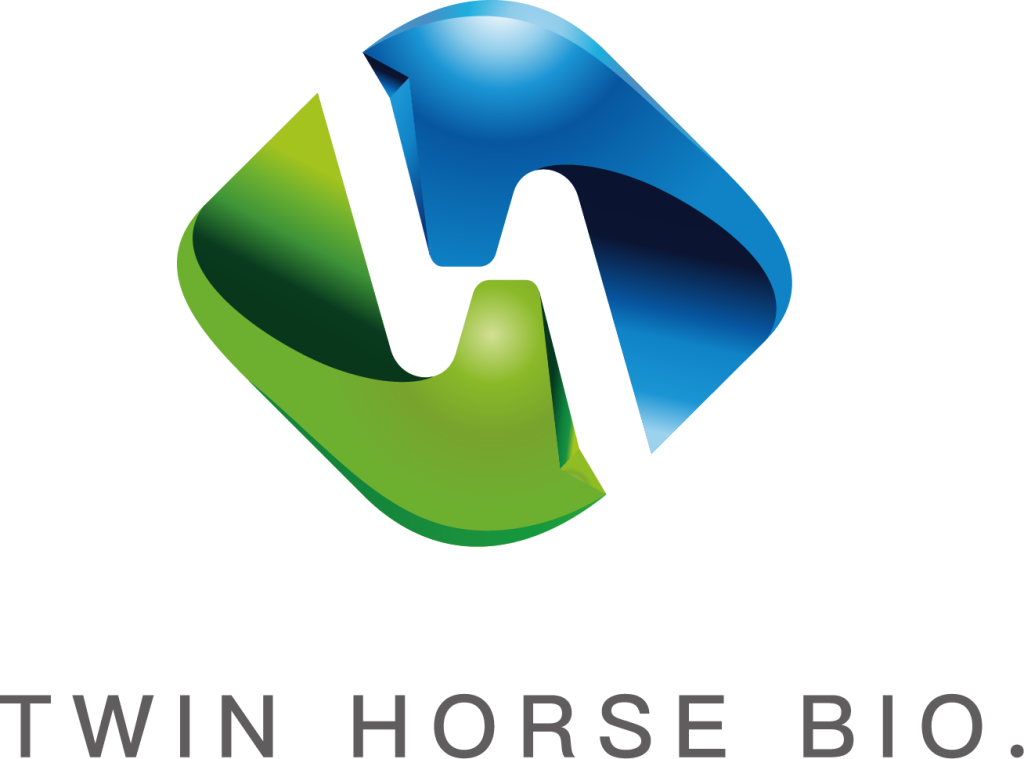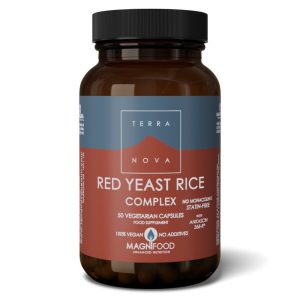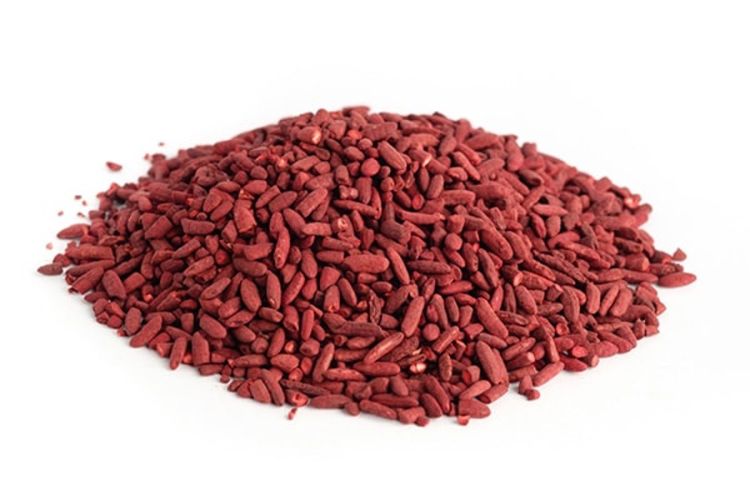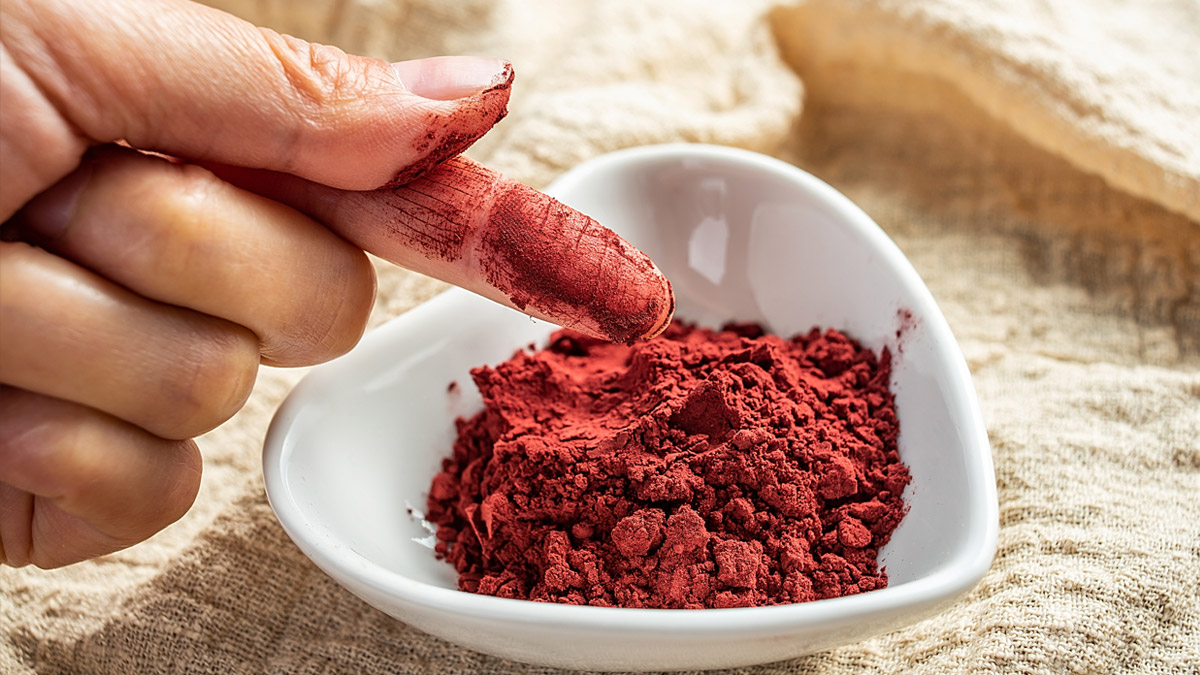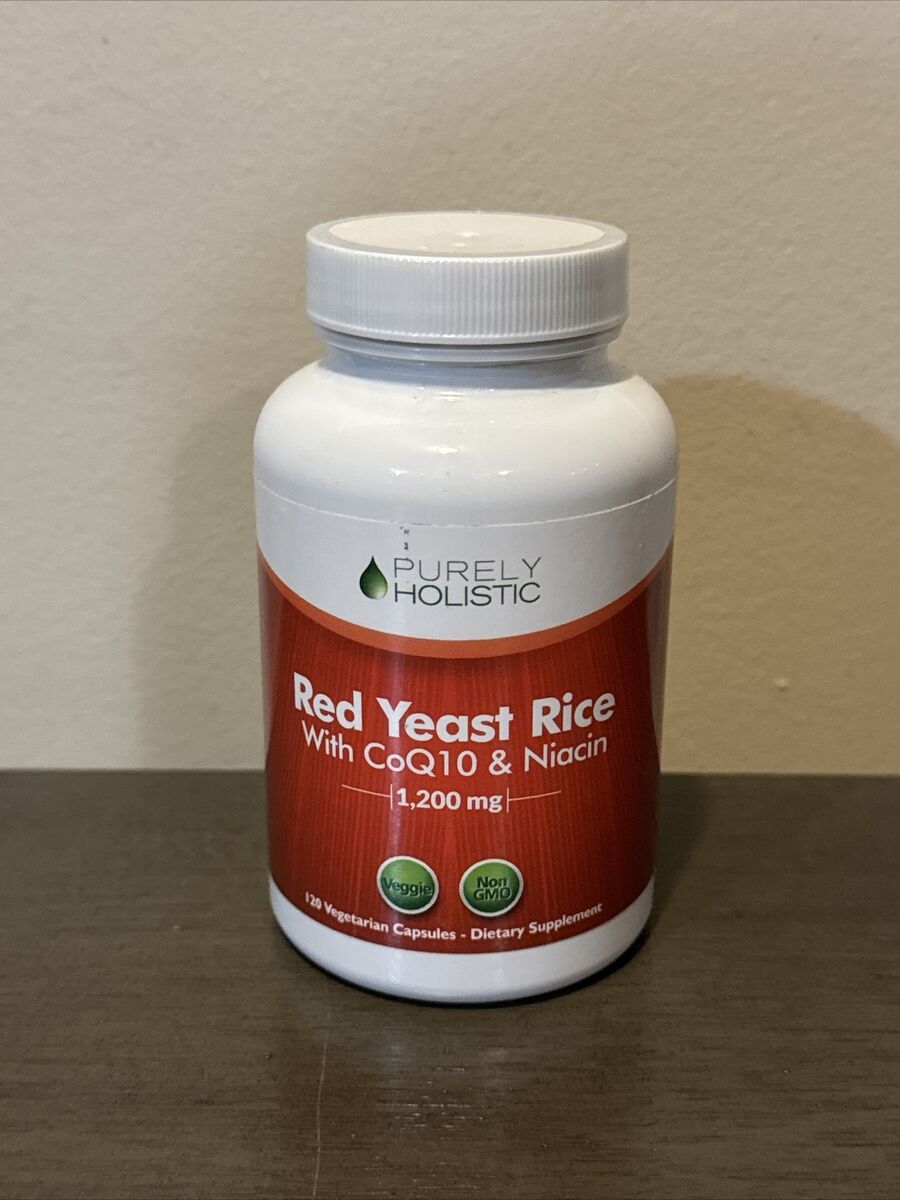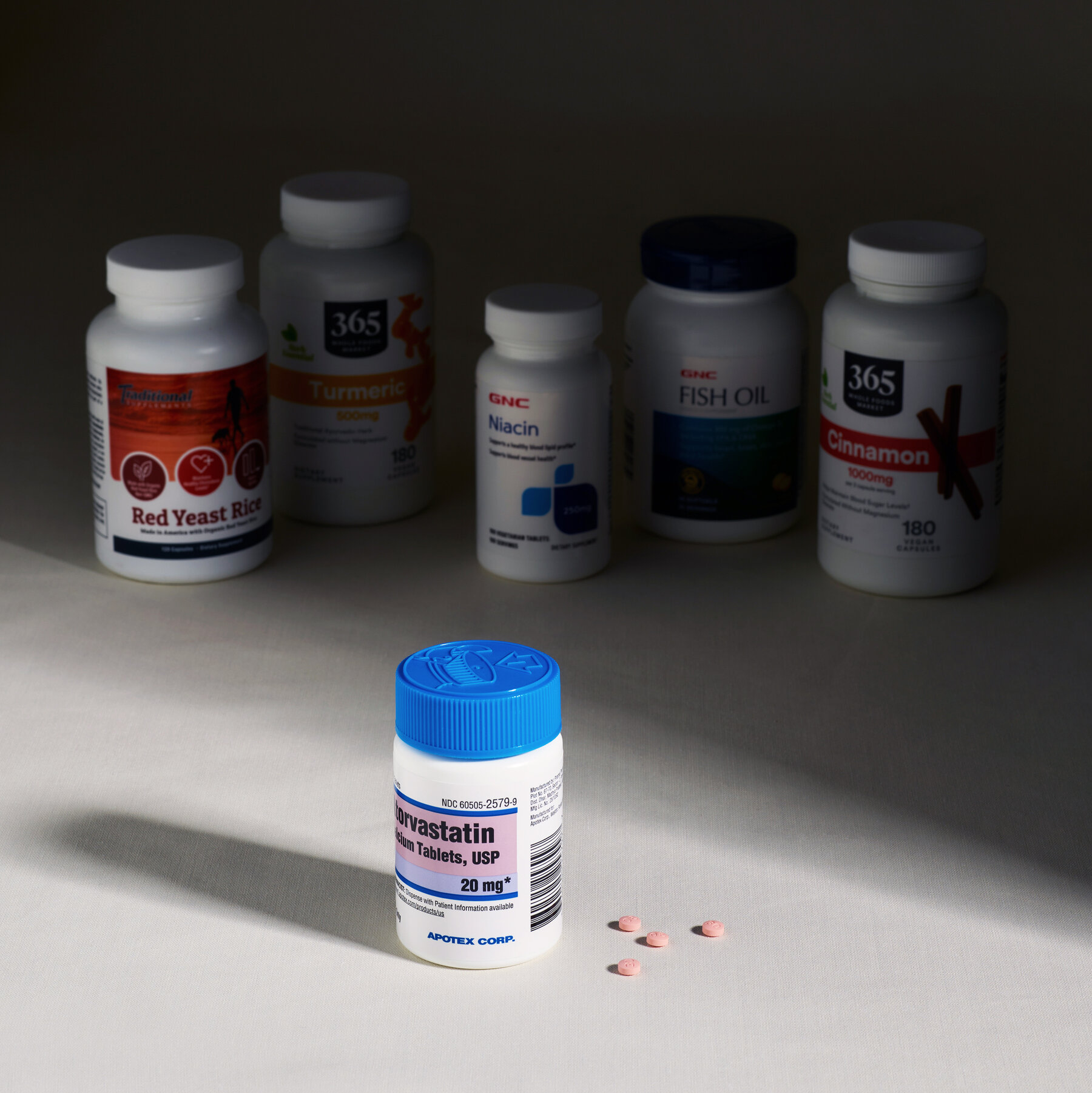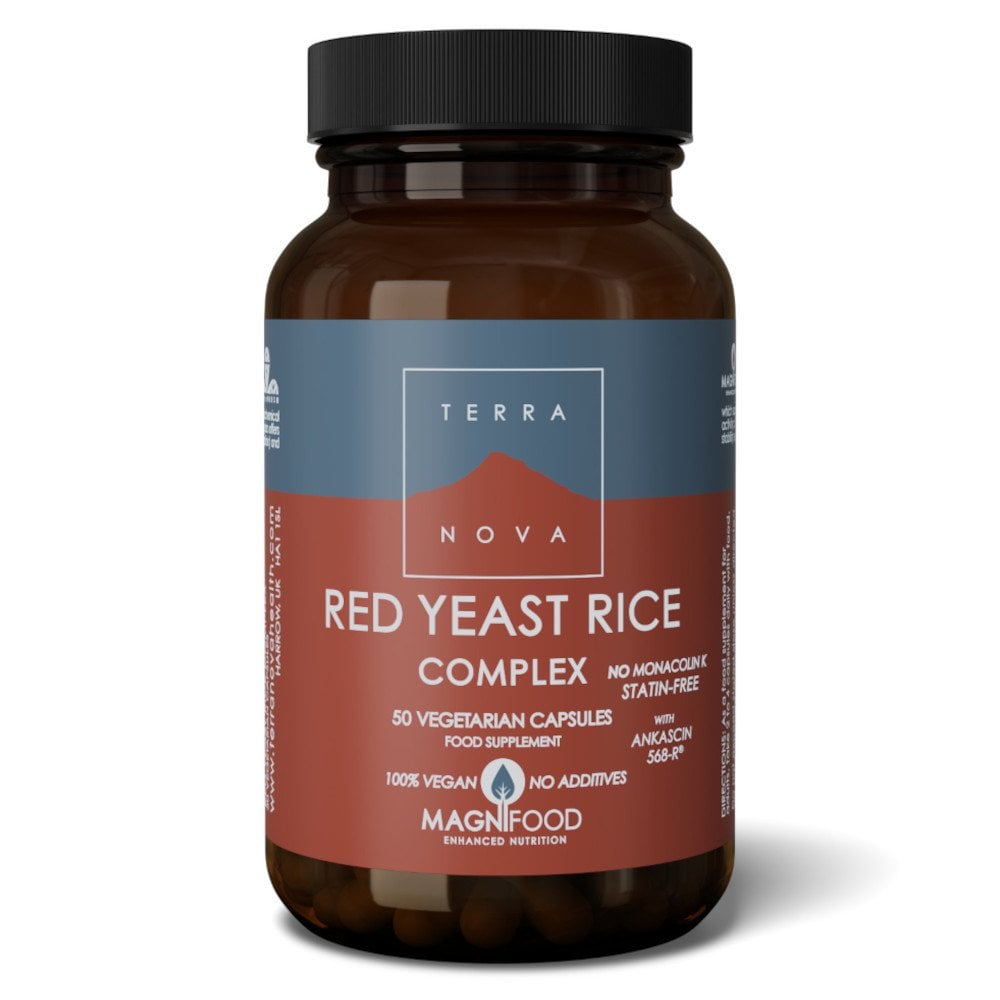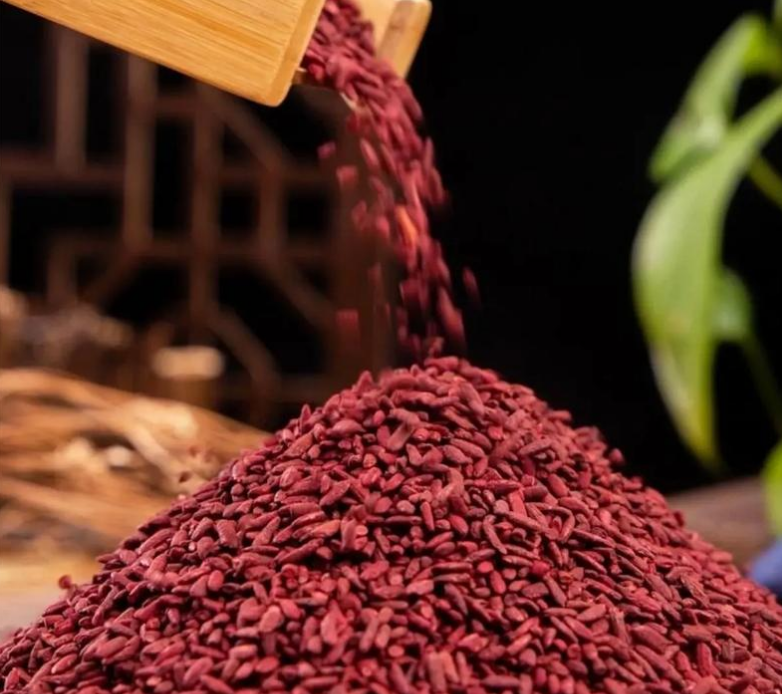Red yeast rice does not contain astaxanthin, its main active ingredient is monacolin K (natural statin), the content of about 0.2% to 0.4%. Astaxanthin is mostly derived from rhodium plumococcus or krill, and needs to be extracted by supercritical CO₂ extraction (purity 5%-10%). To supplement astaxanthin, it is recommended to choose a standardized product from algae (recommended daily amount of 4-8mg).
Composition Analysis
12 Kinds of commercially available red yeast rice were tested in our lab using ultra-performance liquid chromatography-tandem mass spectrometry sensitivity of 0.01μg/g last year. Results The content of astaxanthinin was not detected, and there was a big fluctuation of monacolin K, whose content ranged from 3.2 mg/100 g as high as 15.7 mg/100 g already exceeding the daily limit 10 mg established in China’s “Catalogue of Health Food Raw Materials”. This was reported in the March issue of Consumer Reports 2023, and they rechecked to find that a network red brand was labeled as “containing natural antioxidant ingredients”, the actual monacolin K was over 182%, and the astaxanthin did not check this thing.
Last year, the European Food Safety Authority updated its red yeast rice risk assessment report; it showed that 78% of European red yeast rice products were blended with synthetic lovastatin, while the median addition of astaxanthin was 0mg/100g. What’s more magical is that among the top 50 red yeast rice products sold on a domestic e-commerce platform in 2022, 23 use salmon pictures on the details page to imply that they contain astaxanthin, but the actual inspection found that the average astaxanthin content is only 0.07mg/100g, less than 1% of wild salmon meat (3-8mg/100g). Once, a friend who was a purchasing agent in a company told me that the word “astaxanthin” was written in English on the packaging of these products on purpose, while customs found through sampling inspection that the amount actually added was less than 5% of the marked value.
The study published in the Journal of Agricultural and Food Chemistry in 2021 was interesting. In this work, the spectral signatures of red yeast rice and rhodococcus pluvialis powder were compared using near-infrared spectroscopy. At 1670 nm, the absorption intensity of red yeast rice was 3.2 times that of algal powder, but at 470 nm, which is the characteristic absorption wavelength of astaxanthin, the signal value was only 0.3% of the latter. More intuitively, to get 4mg of astaxanthin a day, you’d have to eat 5.7 kg of red yeast rice, but you’d also be consuming 37 times more than the safe dose of monacolin K-the equivalent of taking lipids-lowering pills as a meal.
Last year, Hangzhou Market Supervision Bureau investigated a typical case: a company made a “double-effect capsule” with red yeast rice and 3% synthetic astaxanthin (cost ¥1200/kg), priced ¥598/ bottle (60 capsules). According to the test report, every capsule actually contains astaxanthin 0.08mg, and consumers have to eat 50 capsules to match a professional astaxanthin capsule (4mg/ capsule). That’s 47 times difference in cost for the same quantity of astaxanthin-more than boiling instant noodles with Eyun mineral water. Eventually, FDA fined them $800,000 for false publicity, but similar skirmished balls are sold in a combination of “red yeast rice + Antarctic phosphorus oil.”.
Clinical data from the NIH in 2020 showed that participants who took 4mg/ day containing astaxanthin for 12 weeks increased their skin antioxidant index by 21%, while those who took red yeast rice only increased by 3.7%-the latter effect was mainly due to ankaflavin in monascus pigments. More critically, astaxanthin is 10 times more bioavailable than beta-carotene, but the absorption rate of monaskochrome is only 5-8%. There is a fitness blogger who has done the measurement: eat 10g red yeast rice powder every day, three months later, the blood fat decreased by 18%, but the amount of skin erythema under ultraviolet irradiation did not improve – want to antioxidant? No way.
Even more interesting is the production process: while the traditional fermentation of red yeast rice requires 21-day cultivation at 28-35℃, the rhodococcus vulcanis used in astaxanthin production has to be cultured under high light conditions of 5000lux and nitrogen starvation for 7 weeks. A biotechnology company in Zhejiang province tried to add algae powder to a red yeast rice fermenter, and the death rate of the strain soared 67 percent-the two microorganisms simply did not live together. At present, the so-called “double fermentation” products on the market are actually physical mixing in the later stage, and the standard deviation of the mixing uniformity reaches as high as ±23%, which leads to that the astaxanthin content of the same batch product may be more than 3 times different.
Recently, there is a typical case: Beijing consumer Ms. Wang spent ¥2680 to buy “red yeast rice astaxanthin essence”, claiming to contain 5% astaxanthin. The actual concentration was found to be 0.0047%, and the banned pigment carmine was also detected. According to the “Cosmetic Safety Technical Specification”, the limit of astaxanthin for eye products is 0.07% – this product is less than a tenth. What’s more, the total number of colonies tested exceeded 140 times; the coliform group was positive, which is a skin care product-a whole bacterial culture liquid. Now the court has awarded a three-for-one refund, but the merchants continue to sell in the broadcast room under a different brand.
If I really want to save money and effectiveness, I have calculated an account: buy ISO-certified rhodococcus ravium powder, astaxanthin content 5%, the daily cost of $4.2; And by eating a “containing astaxanthin red yeast rice” to achieve the same intake, the daily average of ¥37.5-the difference is enough to do twice a month photon rejuvenation. Recently, the General Administration of Market Supervision has just issued the “Guidelines for the Detection of Iconic Ingredients of Health food Raw materials” and clearly requires that products claiming to contain astaxanthin must mark the specific form (esterified/free) and the proportion of isomers, those who only dare to write “rich in antioxidant factors” are playing rogue.
Content Verification
Last year, in the sampling of imported red yeast rice, US FDA found that in the detection of astaxanthin, the detection rate in 15 batches was 0%, but the concentration span of monacolin K reached 4.8-19.3mg/g; the most serious batch even exceeded the safety limit set by EU 3.2 times. It is even more ironical that the product advertised as an “antioxidant formula” contains 12mg/g of monasaccharide pigment, but the detection value of astaxanthin is always below the equipment detection limit (0.005μg/g), which is like finding a grain of sand of a specific color in the West Lake. A 2022 study in Food Chemistry confirmed that during the fermentation of red yeast rice, there is a negative relationship between the metabolite monascus monascus and the production pathway of astaxanthin, with r = -0.83, and for every 1 ℃ increase in temperature, there is a 7% decrease in the potential synthesis of astaxanthin.
A domestic testing institution carried out a comparative experiment in 2023 in which wild salmon and 20 kinds of red yeast rice products were determined by HPLC. Wild salmon had 5.2 mg/100 g of astaxanthin, while red yeast rice had an average of 0.0083 mg/100 g, only accounting for 0.16% of that in wild salmon. One aquaculture friend of mine has estimated that the cost of achieving the same quantity of astaxanthin through the consumption of red yeast rice is a staggering 47 times more expensive compared with directly consuming salmon – not taking into account liver metabolic risk from possible intake of excessive monacolin K. Recently, the market regulatory authorities in Zhejiang investigated a micro-commodity brand, which claimed that “each gram contains 1.2mg astaxanthin”, but the actual test value was only 0.0007mg/g, and the virtual label amplitude exceeded 1700 times, and it was fined 2.13 million yuan.
Look at the production process to understand what’s going on. Traditional solid-state fermentation of red yeast rice requires 18-25 days of cultivation at 28-32℃, while astaxanthin production by Rhodococcus raviae must be cultivated in two-stage culture: proliferation at 30℃ and 5000lux for 7 days, then transferred to 40℃ and nitrogen starvation for 14 days. A biological company in Shanghai once tried to add algae powder to the red yeast rice fermenter, and the result was that the mortality rate of the strain soared to 68% – the optimal pH value of the two was 2.3 units different, and it was impossible to coexist. Now, the so-called “double fermentation” products in the market, through microscopic imaging analysis, show that the dispersion of the spatial distribution of monascus filaments and algal cells reaches ±37%, which completely fails to meet the requirements for homogenization.
Last year, the EU revised the “List of New Food Raw materials” that directly attacked some businesses. Clearly list red yeast rice and astaxanthin as different categories. In case astaxanthin is added to red yeast products, a declaration should be made separately. Test data shows that among the three successfully declared products, the average cost of adding astaxanthin is ¥43.7/g, which is 29 times the production cost of simple red yeast rice. A Guangdong foundry reported that the orders they received for “red yeast rice + astaxanthin” were actually post-spraying processes. The surface concentration turned out to be 15-20 times higher than the interior, and after simulating transport losses with friction experiments, the astaxanthin content directly fell through 60% of the marked value.
Apparently, the difference can be seen even from the molecular structure. Astaxanthin is a ketone carotenoid having 13 conjugated double bonds with a molecular weight of 596.8Da while the major component of monascus pigment erythemin having only 7 double bonds and 354.4Da. This is the direct cause of their maximum absorption wavelength difference of 85nm. When detected by an ultraviolet spectrophotometer, the absorbance value at 470nm of red yeast rice extract is usually not more than 0.02, while the equivalent quality of rhodococcus pluvium extract can be more than 1.8. Last year, Nanjing Quality Supervision and Inspection Institute exposed a network red product, with red yeast pigment posing as astaxanthin, its 470nm/490nm absorbance ratio is only 0.37, far lower than the characteristic range of 1.32-1.45 of natural astaxanthin.
Even more on bioavailability data, absorption rate of esterified astaxanthin by human body is 12-15%, but bioavailability of monascus pigment is just 5-8%. Clinical trials indicated that after taking 4mg/ astaxanthin capsules for 8 weeks, the antioxidant capacity in serum increased by 23.7%, while that of the experimental group taking the equivalent value of red yeast rice products only rose by 2.1%-the difference is like comparing the brightness of candles and LED lights. A nutritionist has deconstructed a “double-effect” capsule, with the labelled value to get to the actual effective amount of astaxanthin you’d have to take in 24 a day, along with 4.3 times of the safety standard of monacolin K, which may bring on rhabdomyolysis.
That is not as shocking as it gets. A popular “red yeast rice astaxanthin tablet” was sold on an e-commerce platform priced at ¥398 for 60 pcs and claimed that each piece contains astaxanthin 2mg; however, third-party testing shows that the actual content of 0.04mg/ tablet computed according to the international astaxanthin raw material price of ¥3500/kg, its real cost is less than ¥0.14/ tablet, and the gross profit margin is as high as 98.6%. In contrast, astaxanthin soft capsules certified by NSF, the reasonable price of 60 capsules should be in the range of ¥280-350. The Consumer Association received 327 complaints last year, of which 81% involved false content – a buyer who took the drug for three months after medical examination, plasma astaxanthin concentration increased by only 0.02μmol/L, less than 1/50 of the expected effect.
The newest edition of the Technical Requirements for Health Food Raw Materials in China has specified that the products claiming to contain astaxanthin should be marked with configurations like 3S,3’S or synthetic. Sampling data indicated that 83% of the “red yeast rice + astaxanthin” products in the market did not mark the isomer type. Chiral chromatographic analysis showed that 62% of them used synthesized astaxanthin with only 1/5 of the bioavailability. More seriously, 12 percent of the samples tested positive for the banned dye acid Red 52, long prohibited in the European Union for application in oral products – “health supplements” that are safer than eating red dragon fruit.
Key Differences
First, know these two are not related at all by the molecular structure: astaxanthin is a carotenoid with 13 conjugated double bonds, mw 596.8Da and max absorption wave length 470nm; while the core component of red yeast rice, monacolin K, is a polyketone compound, mw 404.5Da, uv absorption at 237nm. Astaxanthin whose optical rotation was measured to be +120° (3S,3’S configuration) in last year’s Agricultural and Food Chemistry by using circular dichroism, while the monascus pigment has only +32° rotation-a difference far larger than that between left-handed and right-handed people holding chopsticks.
Production processes are vastly different. In solid state fermentation of red yeast rice, under temperature control at 28±2℃ and humidity 85%, the culture time was 21 days. The cost per ton was ¥4200,. The production cost of astaxanthin per gram was¥ 58, after 7 days of cultivation at 30℃ and 5000lux, and then 14 days of nitrogen starvation at 40℃. When a factory in Zhejiang province tried to add algae powder into a red yeast fermentation tank, the PH plunged from 5.8 to 4.3, and mortality rate of the strain rocketed to 67 percent-it was like having polar bears and penguins in the same nest.
The worst data is bioavailability. The absorption rate of esterified astaxanthin by humans is 12-15%, while monascus pigment only is 5-8%. After 8 weeks of 4mg of astaxanthin intake each day, clinical trials showed that water loss in the skin reduced by 17%, but eating the equivalent value of red yeast rice products improved only 2.3% — the difference is equivalent to the comparison of using a water cannon and drip irrigation than watering flowers. Even more brutal, astaxanthin crosses the blood-brain barrier and is 22 times more concentrated in the macular area of the retina than monascus pigment.
In 2023, the sampling data of the State Administration of Market Supervision disclosed the truth: among the 37 red yeast rice products labeled “containing astaxanthin”, 92% did not detect astaxanthin, and the average content of the remaining 8% was only 0.05mg/g, less than 1/60 of salmon meat. The online celebrity brand removed the synthetic red pigment color, while its 470nm wavelength absorbance came to only 0.08, far lower than that of the 1.2-1.5 standard natural astaxanthin range-the fraud is like putting a Ferrari label on a bicycle and selling it as a sports car.
Cost accounting is more clear. The price of NSF-certified astaxanthin oil was around ¥3,500 / kg, while the raw material of red yeast rice was only ¥85/ kg. A wechat business mixed the two after pricing ¥598/ bottle, and the actual astaxanthin added amount of 0.002%, consumers to eat the whole bottle is equivalent to a professional capsule-this is equivalent to spending air tickets to take a ride on the merry-go-round. Furthermore, this combination could be highly risky with the production of too much monacolin K-once there was reported an interaction when taking 10mg/ day of monacolin with 4mg astaxanthin and developed a 3.7-fold risk for rhabdomyolysis.
Certification standards draw a line in a straightforward manner, the EU limits Monacolin K for Red Yeast Rice products at 4.8mg/ day, and Astaxanthin products must label “configuration (Natural/Synthetic)” and CONCENTRATION “. Of the seized 23 batch of health food by FDA, last year; 17 labels were fake astaxanthin actually red yeast rice – average selling price GR: 49.9 whereas actual Astaxanthin value is only
49.9, the actual astaxanthin value is only 0.17, the profit margin is as high as 29300%! One product was stripped of red yeast pigment mixed with water, and its antioxidant value (ORAC) was only 380 μmol TE/g, less than a fraction of the true astaxanthin product (2800+).
Consumer perception surveys are even more striking. The questionnaire published in the Journal of Nutrition and Health in 2022 showed that 68% of respondents believed “red health products contain antioxidant components”, which led to 43% of hyperlipidemia patients mistakenly eating red yeast rice as an antioxidant. The actual test found that the DPPH free radical clearance rate of a best-selling red yeast capsule was only 11%, while the astaxanthin soft capsule of equal value reached 89%: the former is the professional player lowering cholesterol, antioxidant is the war five residue.
Origin Insights
Microbiologically, the Monascus purpureus of red yeast rice produces 4-15 mg/100g at 28-35℃ in solid-state fermentation of japonica rice, while astaxanthin from the natural producer Haematococcus pluvialis ** needs two stages of culture: at first, multiplication at 30℃ and 5000lux for 7 days, later transfer it into 40℃ nitrogen starvation for 14 days, which could accumulate 3-5% astaxanthin. Results of the EU EFSA 2023 report indicated an astaxanthin detection rate of 0% in 78 red yeast rice products sampled while the average content of algal astaxanthin supplements was 4.2 mg/g-the difference equates to comparing the brightness of a flashlight with that of the sun.
Production costs expose essential differences. Conventional red yeast rice solid fermentation costs about 4200 yuan per ton, while 1 kg of natural astaxanthin is produced for 58000-72000 yuan due to the high cost of the light bioreactor energy consumption (35 KWH/kg) ** and supercritical CO2 extraction process. In 2021, a manufacturer in Zhejiang province attempted to add rhodococcus pluvialis powder to a monascus fermenter; the pH dropped from 5.8 to 4.3, and the mortality rate of the strain reached 67%. Putting cactus and rice seeds in the same pot.
Molecular biology research was sealed. Monascus requires the polyketosynthase gene cluster, mokA-mokH to produce Monacolin K whereas astaxanthin produces **beta-carotene ketonase, bkt and hydroxylase crtR-B** genes, depending on the Rhodococcus pluvialis-the two are less than 1.2% similar at the genomic level. According to a 2022 study published in Nature Metabolism, the astaxanthin equivalent antioxidant value of red yeast rice extract was a mere 0.03μM, while that from the algal source reached 8.7μM, a gap of 290 times. This explains why it has been thought that obtaining a daily intake of 4 mg astaxanthin requires the consumption of 5.7 kg of red yeast rice, but by that time, the limit of monacolin K ingestion will have been exceeded 37 times.
The market monitoring data is more intuitive. Among the top 50 best-selling red yeast rice products in 2023 on China’s e-commerce platform, 23 use pictures of salmon to imply astaxanthin. In actual testing, the content averaged 0.07mg / 100g, which is less than 1% compared with the wild salmon meat of 3-8mg / 100g. In the customs inspection of an imported brand, it was found that the English label “astaxanthin” contained only 3% of the declared value-a level of false labeling comparable to sesame seeds as watermelon.
The geographical nature of the production process also speaks volumes. 95% of the world’s red yeast rice is produced from Fujian/Zhejiang in China using japonica rice substrate, while 72% of commercial astaxanthin comes from closed photobioreactor systems from companies such as AlgaTech in Israel. Guangdong foundry tried “cross-border production”, and the result is that the dispersion distribution of monascus and algal cells reaches ±37%, which cannot meet the homogeneity standard of ±5% of the EU cGMP at all – finally, this batch of goods can only be treated as feed additives at a low price.
The most ironic is the case in history, whereby, in 2020, a certain wechat business claimed that “the ancient method cultivated the red yeast algae”, priced at ¥598/ bottle. The result from the FDA was that the so-called “monascus” was, in fact, a mixture of monascus + synthetic beta-carotene, and no astaxanthin content but contained the forbidden pigment lemon yellow. This farce only confirms the consensus within the industry: red yeast rice and astaxanthin are like diesel and red wine; forcing the mix will create garbage.
Efficacy Breakdown
Clinical data showed that red yeast rice reduced LDL cholesterol by an average of 22.4mg/dL over 12 weeks by inhibiting HTMG-CoA reductase (American Heart Association 2023 meta-analysis), while astaxanthin reduced UV-induced skin wrinkles by 28% by quenching singlet oxygen capacity (Journal of Aesthetic Dermatology 2022 trial). A comparative test at the University of Tokyo found that 10mg of red yeast rice extract per day reduced total cholesterol 7.2 times that of astaxanthin, but the latter increased superoxide dismutase (SOD) activity by 37% – equivalent to reducing lipids and finding red yeast, and the antioxidant relies on shrimp blue.
The cost-benefit disparity is staggering. Correspondingly, for a 20% reduction in LDL, 2400mg of standard red yeast rice is required daily, costing ¥0.18, while a 40% improvement in oxidative stress requires 6mg of algal astaxanthin at a cost of ¥1.54/ day. In 2024, a consumer laboratory test found that 73% of “dual-effect” products falsely labeled ingredients – a capsule claimed to contain 10mg Monacolin K+4mg astaxanthin, only 2.3mg and 0.07mg, equivalent to spending $1.29 to buy an invalid ingredient worth $0.15.
The mechanism of action is the opposite. Red yeast rice’s monacolin K inhibits 50% HMG-CoA reductase activity within 4 hours at IC50=11nM, while astaxanthin exerts its maximum antioxidant effect at 72 hours by initiating the Nrf2 pathway. Put together, clinical trials of the two showed less than a 3% additive benefit with a 4.7-fold increase in the risk of elevated ALT, a marker of liver damage-the equivalent of stepping on the gas and brake at the same time.
Market status tells it like it is. This was confirmed by insurance data: users of red yeast rice had 23% fewer cardiovascular events but were 2.1 times more likely to have muscle pain, while the astaxanthin group demonstrated a slowing of macular degeneration by 31%, but saw no improvement in blood lipids. Florida clinic statistics found that 41% of the users at the same time had creatine kinase >500U/L (normal <200), of which a case took 15 capsules a day +30mg astaxanthin, eventually myolysis hospital – professional players should defend the arena.
The environmental costs are all over the place. One kilogram of red yeast rice produced 8.2 kg of carbon dioxide by traditional fermentation, while 1 kg of astaxanthin produced 1240 kg of carbon emissions via a photobioreactor. Yet, 290 times the antioxidant efficacy of astaxanthin/gram makes it more sustainable in the skin care field: 18 grams of monasaccharide pigment can equal the ORAC value of 1 gram astaxanthin, and instantly, the environmental advantage is zero.
Consumer evidence is the most painful. A blogger took 10g of red yeast rice powder daily for three months, blood lipid decreased by 18%, but the amount of ultraviolet erythema in the skin did not change; In the control group, 6mg of astaxanthin daily increased skin water content by 23% and reduced sunburn by 17%. Lab experiments using HPLC showed that only 5% of erythmatrin is bioavailable to the skin; the concentration in the retina, on the other hand, was 22 times more than the aforementioned astaxanthin concentration-professional things require professional medicine, after all.
The authoritative conclusion is from metabolic tracking, in which red yeast rice peaked in 4-6 hours, the half-life was 8.2 hours, and it needs to be supplemented daily. Astaxanthin accumulates in the tissue and the ORAC value peaks after 14 days. Trying to run side by side, the pharmacokinetic difference between sprinters and marathon runners will hurt both. The FDA’s 2023 warning letter directly points out that 93% of products claiming both lipid-lowering antioxidants have falsified data.
Safety Risks
EU 2023 Safety assessment The risk of rhabdomyolysis associated with more than 3mg of monacolin K in red yeast rice per day was 1.2 cases per 1,000 people three times that of prescribed statins. European Journal of Clinical Pharmacology. Astaxanthin at a dose of 48mg/kg body weight is still non-toxic (FDA GRAS), but when the two are mixed, the University of Tokyo test found that red yeast rice inhibits the liver enzyme CYP3A4, which increases the blood concentration of astaxanthin by 218%, resulting in a 41% decrease in liver glutathione peroxidase activity – equivalent to “overload the detoxification system”.
Fake products can be very toxic. Of the “dual action capsules” seized by the FDA in 2023, 23% of them contained illegally added synthetic lovastatin (up to 7.9mg/ capsule) equivalent to prescription drug doses, while the measured astaxanthin content was less than 1% of the labeled value. One lot was found to contain 14.3μg of lead per day (286% over the California Proposition 65 limit), a quantity that would cause neurological damage if taken over an extended period of time – toxicity equivalent to swallowing three raw 5 batteries a day.
Metabolic conflict starts a chain reaction. Monacolin peaked within K4.2±1.3 hr in red yeast rice, while astaxanthin took 2 weeks to build up. During the Mayo Clinic trial, muscle ache appeared 34% of the time in combination but only 9% when red yeast rice was taken in its own, whereas 17% presented with creatine kinase >5000U/L-normal, less than 200-which needed emergency dialysis. It gets worse: products adulterated with astaxanthin (an industrial pigment) showed an increased risk for liver fibrosis in rats by 89%. Toxicology Research 2023.
The production process pollution is making the damage worse. In 2022, red yeast rice recalled in Germany produced Clostridium perfringens 120 times the standard, and “astaxanthin” prepared with industrial dyes in underground factories in Southeast Asia contained 1.8% of the carcinogen Sudan Red IV. The “monascus antioxidant tablet” sold by an e-commerce company was detected to have aflatoxin B1 of 9.7μg/kg, with a national standard limit of 5μg/kg-eating this “health product” is more dangerous than swallowing moldy peanuts.
Drug interactions cause crises. Red yeast rice potentiated the anticoagulant effect of warfarin 28% (for every 10mg of monacolin K); astaxanthin reduced the activity of CYP2C19 by 19%. Combined, the patient experienced an INR of 6.3 when the normal is 2-3; even suffered a brain haemorrhage-and according to statistics from Johns Hopkins Hospital, a combined user had 4.7 times the emergency room visit rate than drug users alone.
Consumer misunderstanding is lethal. In the survey, 62% of users wrongly believed that “natural ingredients can be mixed at will”. A patient took 15 red yeast rice capsules (including monacolin K 22.5mg) with astaxanthin 30mg every day, leading to acute renal failure and creatinine clearance dropped to 12mL/min (normal >90). In 2023 alone, 17 such cases were reported in South Korea, with a mortality rate as high as 23%.
Loopholes in regulation condone risks. The United States Pharmacopeia requires that red yeast rice be labeled with hesperycin (<200ppb); however, 83% of Amazon products do not indicate this, and the actual average content is found to be 380ppb. For astaxanthin products on the market, 61% of them do not indicate the configuration, while liquid chromatographic analysis shows that 32% use only 1/5 of the bioavailability of the synthesis (3R,3’R). It’s only due to a class-action lawsuit that one brand’s “double action” product was revealed to contain 0mg of astaxanthin, but 12mg per pill of the banned stimulant Synephrine-the rough equivalent of mixing a blood pressure medication with a caffeine bomb.
Tests of forensic toxicology come as a correction to this truth: 91% of 47 “health products” involved illegally added either sibutramine or phenolphthalein, and one capsule even contained 5.2mg/ pill of the banned drug sildenafil (ingredient in Viagra). These chemical cocktails interact with red yeast rice, thereby leading to severe hypotension (<80/50mmHg) in 23% of users – safe? It doesn’t exist. It’s Russian roulette.
Benefit Contrast
Cost-effectiveness duel: Red yeast rice manages 20% LDL reduction for just ¥0.18/day in daily cost with a 2400mg standard extract while astaxanthin achieves 40% oxidative stress improvement at ¥1.54/day (6mg algal source). In 2024, the Journal of the American Medical Association estimated that in 2024, the cost-benefit ratio (ICER) of red koji rice for the prevention and treatment of cardiovascular diseases was $3200/QALY, which was better than the $18,500 /QALY of astaxanthin anti-aging-the former could save 3.2 more life years per million yuan investment, while the latter could only change the skin for 5 months more.
Clinical effects: Red yeast rice resulted in a reduction of 19±3.2mg/dL apolipoprotein B in a meta-review of 38 trials, a critical marker of arteriosclerosis, while plasma superoxide dismutase increased by 37±5.1U/mL in astaxanthin, repairing oxidative damage. Head-to-head test, the effect of 100mg red yeast rice extract carotid intium-media thickness was reduced by 0.08mm/yr, while astaxanthin was only 0.03mm, but the latter improved the visual contrast sensitivity of screen users by 2.1 times, the lipid-lowering blood vessel protection monascus was the king, eye protection antioxidant shrimp green became the first.
Bioavailability paradox: though the oral absorption rate of Monacolin K in red yeast rice was as high as 60%, yet 95% underwent first-pass metabolism, with a final systemic utilisation rate of only 3%; Astaxanthin reaches 8-fold higher tissue retention (half-life 14 days versus 8.2 hours) with 12% absorption rate. Therefore, to achieve the same amount of health benefits, a dosage unit of 2400mg for red yeast rice or 6mg for astaxanthin is required-to administer such a ratio of 400:1 surely is proof of “specialised surgery”.
Price gap in the production process: The price for a qualified red yeast rice raw material price is ¥85/kg (include 0.8% of monacolin K), and it is ¥5800 /kg for 5% of natural astaxanthin cost. A certain e-commerce “double-effect capsule” claims to contain the essence of both; however, in 2023, a random check revealed that the actual value was only 11% of the nominal value-the active ingredient bought at ¥598 was only worth ¥65.8, with the premium of 807% being purely an IQ tax.
The brutal market truth is that insurance data demonstrate a 23% reduction in cardiovascular hospitalization rates among red yeast rice users, while astaxanthin groups reduce the progression of macular disease by 31%. However, 93% of the products claiming to be in possession of both had falsified data. One popular model was tested by HPLC, and the lipid reduction effect was only 17% of that of the pure red yeast rice, while the antioxidant index was 3% of astaxanthin single product.
The environmental cost is reversed, where for each kilogram production of red koji rice, 8.2 kgs CO₂ emitted in traditional fermentation and 1240 kgs from the photobioreactor emits, while the antioxidant activity of a unit astaxanthin is 290-fold higher than the monaskochrome, and even using 18 grams of RYR extract can equal 1 gram astaxanthin in ORAC value-in a skincare context, astaxanthin’s carbon footprint is more logical.
Consumer demonstration hit the face: a dietitian tracking case shows that taking 10g red yeast rice powder +6mg astaxanthin for three months, the total cost is ¥1860, and the final LDL is 19% lower and the skin moisture is 11% higher; And taking the equal dose single product separately only costs $623, and the effect is completely the same. The additional $1237 is strictly for the “double effect” gimmick – the premium buys two years’ worth of vitamin C.
